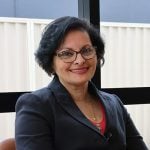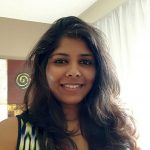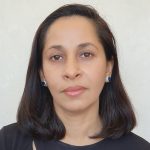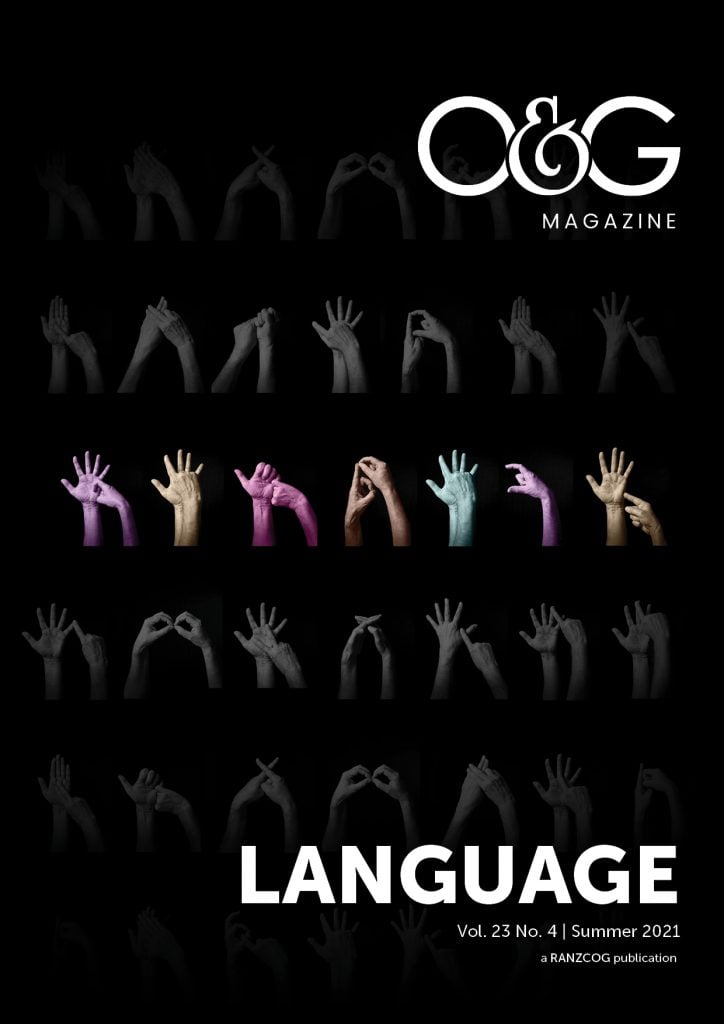Dr M Talat Uppal
Since 1945, when the first federal immigration portfolio was created, over 7.5 million people have settled here and Australia’s overseas-born resident population is estimated to be about 30% of the total, as per the Australian Bureau of Statistics (ABS) data.
I’ve considered myself a global citizen for as long as I can remember; by birth I am of Pakistani origin, grew up in Africa, and migrated to Australia just after my MBBS/internship work. I do have a unique accent and am often asked where I am from. I do not take offence to this and feel that it is intended as a natural curiosity; mostly I turn this query around and say ‘try and guess.’ I am constantly amused at the answers, many significantly geographically remote from the reality!
I am proudly multilingual and often say, humour intended, ‘I speak three languages and a bit of English’
Migrants’ wellbeing and financial independence is strongly tied to their employment, education and English language proficiency.
I fondly remember my first day in the birthing suite as an eager medical student, feeling immediately – this is what I was destined to do longer term, this was my calling. As a generalist O&G, I have felt that passion has remained undiminished, despite the uphill-ness of some of my journeys and the hoops I have jumped through to get to where I am today.
My professional journey, in terms of settling into the Australian medical system, was a relatively comfortable one at the entry, probably because I migrated when I had just recently completed my medical degree, hence the Australian medical Council exam (1 & 2) were easily accomplished. Pre specialist days, one is more well-rounded in terms of knowledge, and all of my education had been English based. I had also passed USMLE 1 & 2 as a medical student, and hence the pattern of the AMC was not daunting for me. I am a nerd at heart and joined various study groups based at Westmead library when I arrived in Australia, though there was not the benefit of the social media connection at that point, in 1995. I then did an observership at Canterbury Hospital prior to my AMC 2.
My personal journey has made me want to give back, so I have set up a private multidisciplinary team care service for women’s health, and it is my pride that we have transitioned a number of observership positions for both medical and midwifery staff. Mentoring those that come behind us is so important to our team.
It can be isolating when you migrate to a new country, and forming the social connections and network I believe is critical, not only for one’s mental health, but also for the practicalities of learning from others’ experiences navigating access into, and survival in, the medical system. I also appreciate that there is a difference between the relatively young migrant that I was, coming from a system overseas where I was also at a junior level, so my transition was much kinder than if I was migrating at a stage where perhaps I was more set in my ways; used to being in a higher position of authority, and then having to assume a role which was midrange. Many consultants in their home country then function as either service registrars when they are trying to gain entry into the system or as provisional fellows when completing the recommended time prior to applying for an upgrade. This can be a double-edged sword because at a personal level, it can be hard coming from a totally different set up and adjusting into the work culture here, and getting accustomed with local practice and policies. Many times, unfortunately, there is less patience from the hospital end (due to workflow logistics) where there can be a perception that, especially at the beginning of their transition, there is less value because that clinician is needing more support and time to settle in.
Although there is so much similarity in obstetrics worldwide, the reality is that working at a busy tertiary service overseas, I had no doubt been exposed to a far wider variety of pathology and skill then my equivalent local Australian graduates. I had done an O&G term as part of my internship and was expected to suture perineums, actively manage the birthing unit with the senior team, and was exposed to far more theatre opportunities, even in my short time working there.
My biggest adjustment was in the counselling of women. I had been taught for years to confidently plan for the patient, and having worked within the logistics of super busy clinics and birthing unit, without a huge emphasis on providing options in the first instance, I needed to adapt to a different style. What I love most about practicing medicine in Australia is the increased time we are able to give women to discuss choices and options and work through, together, what would be the best individualised management plan for them (especially as a consultant in private practice, it is now entirely my decision how long I want to spend in a consult). The mindset overseas (albeit more than two decades ago) was that patients mostly expect the doctor to tell them the management plan, and may be less comfortable to be asked to actively contribute to the decision making. It is ideal that women are in the driving seats of their health journeys; however, this is a complex space requiring culture changes in the community, but also the resources to support this.
Even now, when I care for migrant patients, they will often cut me short when I am trying to elaborate options of care and say ‘you decide, I trust you and you know best’, to which I then respond and say, ‘I would like us to discuss more and for you to choose, but yes of course I will give you my opinion/recommendation’.
The ability to speak a language that the women understand cannot be underestimated in migrant health. At times, the relief on the faces of women and their families is so visible when you communicate with them, and the connection more instantly solid in terms of trust. I love these moments, because as healthcare providers, we are constantly striving for those that we care for to be at their most comfortable points on their path to health.
Diversity has been shown to be an asset for healthcare, and in general for any institution. Unfortunately, the more senior I became, as a woman of colour, I saw hardly anyone that looked like me in a position I could aspire to. I have been in countless forums of this sort, and I have been a constant catalyst for change in this space so that others behind us in the timeline will have different experiences.
Specialist international medical graduates (SIMGs) contribute significantly to the wellbeing of women and their families in Australia. Inclusive work cultures are best, offering an empathetic support to the transition of such doctors. There is incredible talent, at times less obvious at the beginning, that blossoms as they get more confident and settled into the role expected of them.
My advice to SIMGs would be to embrace change; the combination of what you bring to the table plus what you absorb in the local system can lead to an amazing version of yourself, do not be limited by who you feel can help you. I have, and continue to, learn a lot from the midwives I work with. I also feel our junior medical officers have so much to offer; the hierarchy can be limiting unless we believe we can teach and learn from everyone in the team.
Dr Poonam Baskaran
I am Dr Poonam Baskaran and would love to share my story with you. I moved to Sydney six months after completing my postgraduate in O&G, all starry-eyed hoping to apply to RANZCOG and be accepted as a SIMG. My dreams came crashing when my application was rejected. From then started the struggle of deciding what path to take. The options were few and clear – to go back to India, choose to give up my career or to appear for the AMC exam and try to work as a registrar. I decided to give it a chance and see if I like working in the medical system here. I cleared the AMC part 1 and was fortunate to get an opportunity to work as an unaccredited registrar in O&G straight after. I was anxious about being in a surgical branch of medicine in a foreign country, but having completed all my formal education in English, I did not for once think language would be a barrier in my professional career. I must say though, Australia does speak English a bit differently. A few words and phrases did throw me off guard. Like for example, when a woman would say ‘I went out with my girlfriend last evening’, I would not understand if she meant she is in a same-sex relationship or just two friends catching up. And as I thought it was a bit offensive to ask directly, I would beat around the bush and get the information I was looking for. I have had to co-relate the actions to words when a colleague would say, ‘I have to have a Wizz!’ Or when they would ask patients especially, postoperatively, if they were passing water well. When I was working in emergency, I had to Google a few slang words like ‘bloke’, ‘feeling crook’, ‘buggered’, ‘cactus’, being a worrywart, having a ‘vom’ or a ‘spew’ to understand what the patients were trying to tell me. I do have a better understanding of what patients mean when they use these words and phrases today, but I wonder if I would ever incorporate them into my vocabulary. I speak three languages apart from English and that has helped me immensely in my communication, especially whilst working in Sydney, which has an increasingly multicultural demographic.
The work culture is also quite different in Australia. Understanding and aligning to the role of midwives in patient care and management was a very new concept for me. It is a beautiful equation and beneficial to patients, but of course, has its downsides. I did feel I was judged initially when the hospital staff would talk a bit slowly ensuring they speak clearly so that I understand, even before knowing my background. Today, I feel they were just trying to be accommodating in their way and being team players but that’s not how I saw it at the time. Of course, the same people, once we got to know each other better, asked me how come I speak English so well? I had to educate them that the majority of the population in India from the metropolitan cities complete their formal education with English as their first language. I also come from a culture where elders are always addressed with a prefix or a suffix as a sign of respect. Addressing senior colleagues by their first name is another thing that took a while to get used to. I have also had some interesting advice from a few very well-meaning colleagues who advised me to ensure that I always have a shower after cooking and before getting to work, or use a good perfume to make sure I don’t smell like spices and curry when I get to work. Although I was a bit frazzled by all of this initially, it is now not a concern at all. I have thoroughly enjoyed my journey of practicing medicine in Australia and can confidently say that if you have confidence in your knowledge and skill as a doctor, the barriers of culture, language, etc would not pull you down for long. It’s about coming in with the right expectations and being willing to adapt, but at the same time stand your ground.
Migrants who have English as their first language may struggle less with language barriers as they settle here and explore various employment opportunities and access healthcare facilities for their family. While their counterparts from countries with English not being the first language may find these language barriers more confronting. I have encountered these scenarios way too often in my public and private practice.
Dr Harpreet Arora
I moved to Australia from India in 2009. After attaining my RANZCOG fellowship, I completed my subspecialist urogynaecology training in 2019 in national and international centres. All these training years exposed me to multiple patients with different cultural backgrounds and language differences where I would be consulting via interpreters to explain conditions and treatment options. Being multilingual and well versed in three different languages, I found that patients with an Indian background really felt at ease with my consultations and most likely to follow through the advice given.
The majority of my practice now deals with urogynaecological problems of prolapse and incontinence, more prevalent in older-age population and that section of immigrant patients who might not have had the opportunity to learn English which makes it difficult for them to access any health services. My practice regularly exposes me to people of various different ethnicities and cultural backgrounds. I was amazed when I recently got referral for Indian patients from an area more than 30km from my practice, even though there are lots of consultants with similar expertise and experience in between. I remember seeing a Punjabi patient who was so happy to see a consultant that can converse in her language during the consultation that she mentioned her concern of not understanding anything with her previous consults being done in English. This not only provokes anxiety related to attending a consultation but can lead to patients’ reluctance to continue with follow up. At the end of my consult, when I decided to provide her with patient information sheets, I realised I didn’t have any in any other language that would be more helpful to the patient. She hugged me and had tears in her eyes at the end of the consult, leaving me teary as well.
I endeavoured to develop some of my information leaflets in Hindi to better serve these patients. Over the following months, more and more patients followed that were highly excited to see a consultant with same-language background, reiterating the importance of culture and language in every community.
I remember as a part of the IUGA (International Urogynaecological Association) pelvic floor imaging special interest group I was tasked to translate patient information leaflets in Hindi and another colleague was asked to produce the Spanish version. The international community is well aware of the need to provide leaflets in different languages and we, at national level, need more work to make these RANZCOG information pamphlets available in different languages as well to help our immigrant population access healthcare more efficiently.
I am glad the College is very keen to highlight these issues of language barriers with this special issue, spreading awareness and developing strategies to help patients with a different first language than English, when it comes to providing healthcare.
Our feature articles represent the views of our authors and do not necessarily represent the views of the Royal Australian and New Zealand College of Obstetricians and Gynaecologists (RANZCOG), who publish O&G Magazine. While we make every effort to ensure that the information we share is accurate, we welcome any comments, suggestions or correction of errors in our comments section below, or by emailing the editor at [email protected].








Leave a Reply